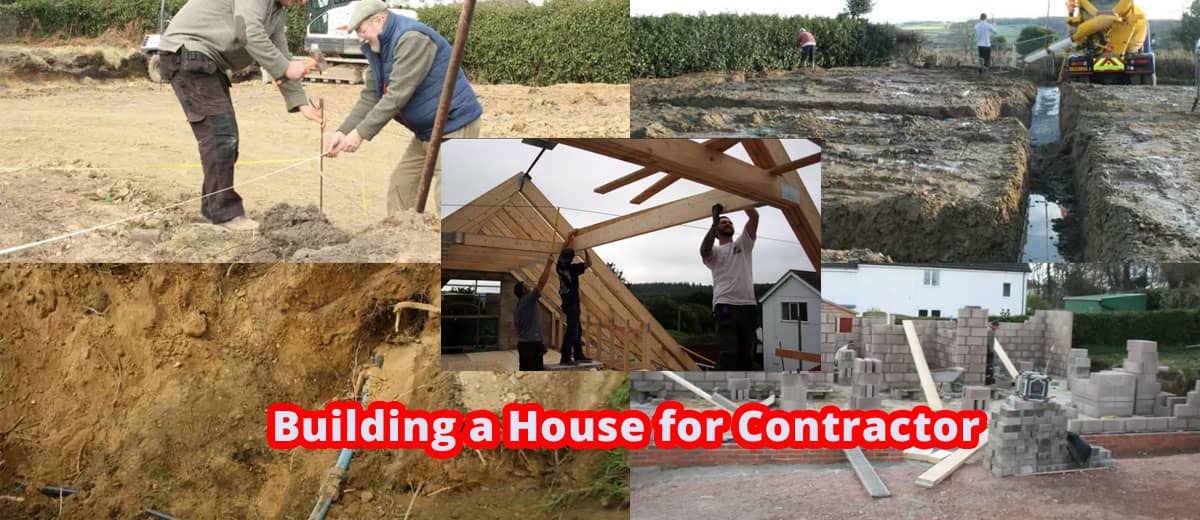7 Steps for Building a House for Contractor

If you're contemplating a construction career, you may be curious about how to make your idea a reality. Each project's complexity, scope, and desired outcome are different. The construction process, however, is the same for almost all projects. When you understand the process, you can make informed decisions throughout the entire project. It is a challenging process, but with proper planning, the experience can be quite enjoyable. A thorough understanding of these steps can help you turn your ideas into real projects.
When properly managed, each phase of the project can define with clear objectives and logical steps. As it helps keep the project within budget and time constraints, maintaining continuity throughout the project is essential.
Project Conception
Conceptualization refers to the initial brainstorming that precedes detailed design. To determine the location and specifics of the project, you searched for feasible. As part of this process, an architect should ensure everything is feasible.
The feasibility study examines whether the proposed solutions align with the main objectives. Owners, architects, and construction managers move to the design phase after the project has been conceived. Here is a roadmap that gives a brief overview of the project and identifies potential stumbling blocks.
Design
The design phase begins after conception is complete. During the design phase, goods and services are not procured, and the project is not even begun. Architects and their teams are in charge of translating clients' ideas into reality. That involves the development of the schematic design, the agreement on the Contractual terms, and the design.
An outline of the project's goals and objectives should create before beginning the schematic design. During this phase, we discuss the size of the building and how the space will use.
Planning
After creating a design, we will use materials and space to show how they will use it. Before moving forward, we will evaluate the project's cost. Architects assess projects' feasibility and come up with modern ideas; engineers ensure project safety. Architects and engineers are busy during this phase, but the majority of their work completes during pre-construction.
The project planner creates a strategic plan after designing the project. When a project divides into smaller digestible units, it makes establishing a completion timeline easier.
Building Permits
To initiate a construction project, you must obtain all the necessary building permits. Different disciplines require different licenses throughout the project. You need to navigate local, state, and federal authorities, and this can be confusing.
Construction should begin before any entitlements obtain for a project. A building's entitlements determine its intended use and how it conforms to city planning and municipal zoning regulations. Public awareness campaigns, town hall meetings, and other steps are all part of the process.
Procurement
When a project team procures the necessary labor, materials, and equipment, the procurement stage occurs. This stage varies in complexity depending on the size of the project, the anticipated commencement date, and the resources available.
You must properly check with the contractor's background before giving all building designs & details of your building.
This stage allows the project to be more cost-effective. The contractor gains a higher profit margin. The economics of scale may allow a contractor with a good and reliable network of suppliers to save a great deal. According to the contract type, these savings may also benefit the client.
Construction Phase
The project can now get underway after the pre-construction meeting. The general contractor still retains overall control at this stage. Managing resources, monitoring documents, and communicating progress are some of his responsibilities. In contrast, the design team is responsible for quality control, which involves checking that the project follows the approved plans. The design team also reviews substitutions, change orders, and submittals.
It is the time of year when teams have their schedules. Constructor Teams have different schedules according to their roles. Before starting their work, some subcontractors need to complete some work. Poor execution at the beginning of a project can lead to numerous hurdles later.
Post Construction
During this phase of the project, all resources that are not necessary are demobilized. We also return rentals and clean up the site. Once the work of the subcontractor is complete, the subcontractor can move on to the next job.
It is necessary to provide all project information to the owner. This group of documents includes close-out manuals, as-built drawings, accounting, and insurance. It is, of course, necessary to change the insurance policy from construction to permanent property insurance. The commissioning process occurs after construction for larger projects. It involves testing to ensure systems fulfill the requirements.
